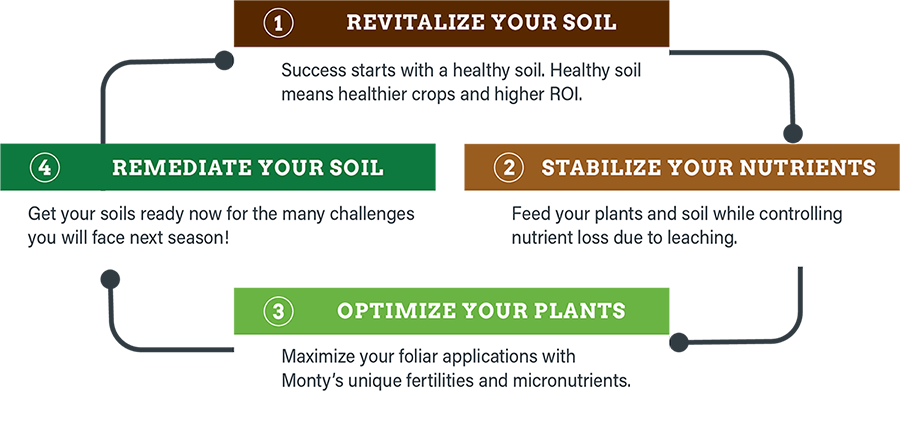SUccess Starts With Healthy Soil
The health of your soil will have a significant impact on the quality and quantity of your yield. Poor imbalanced soil can negatively impact your crops and rob you of yield.
What Is Imbalanced Soil?
If you have imbalanced soil it means there is a biological, chemical, or geological imbalance in the soil. Our soils today are NOT as productive as they once were. Weather, insects, erosion, over-production, and high salt products have led to imbalanced soil robbing your yield potential.
Out of balance soil:
- Reduced biological life
- Erosion
- Crusting, cloddy, hard to work soil
- Little or no earthworm activity
- Water logging, poor drainage
- Compacted, poor root systems
- Insect and disease problems
- Poor organic matter decomposition
- High salt
- More fertilizer/chemicals needed
- High weed pressure
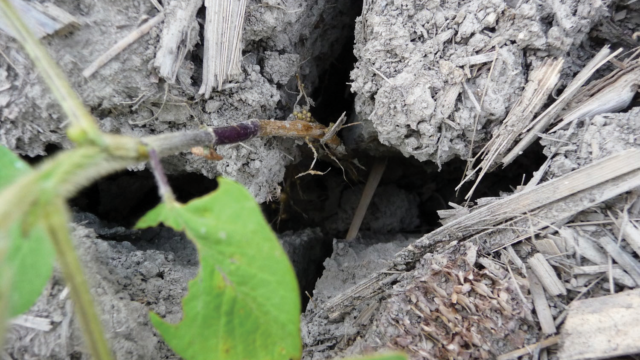
Compaction
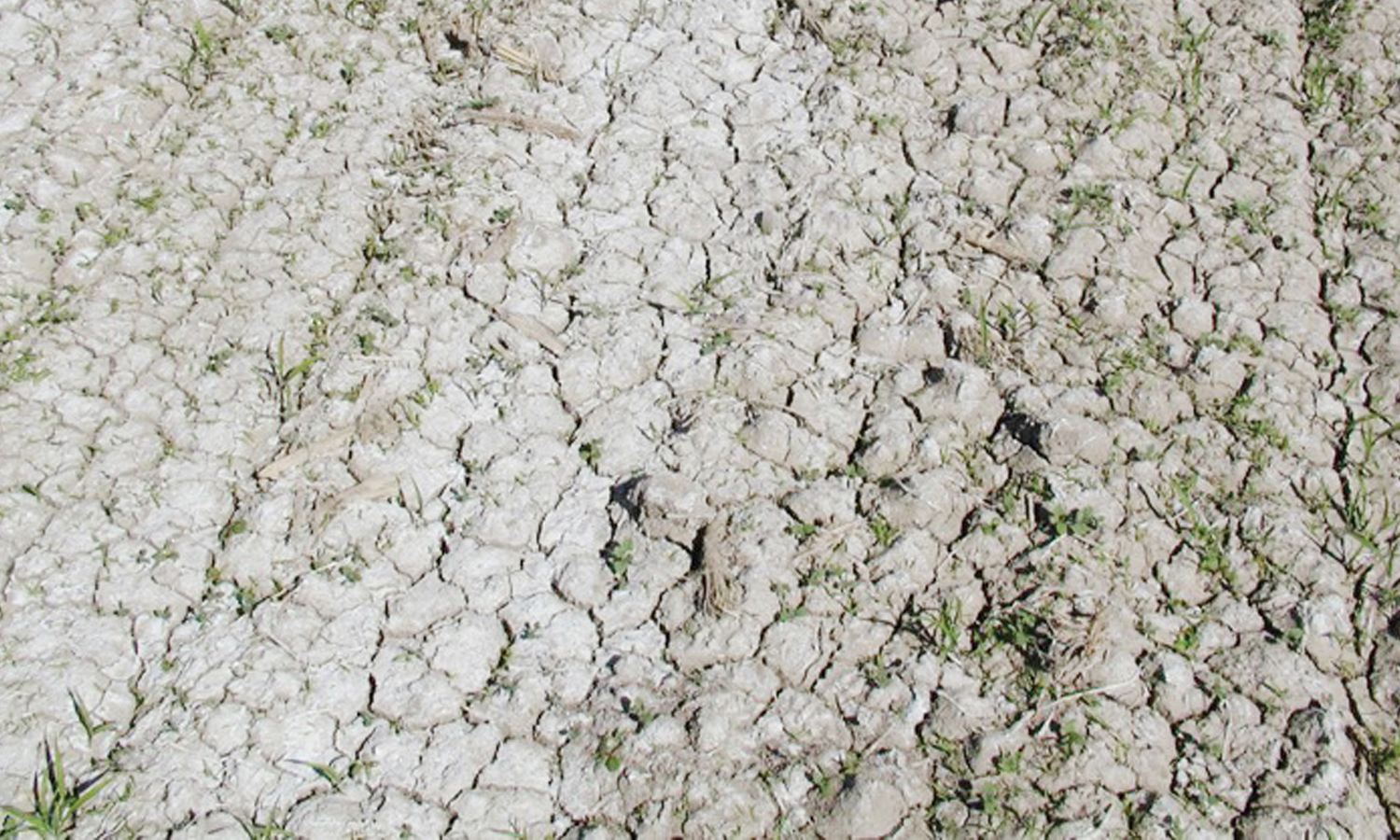
High Salt

Minimal Life
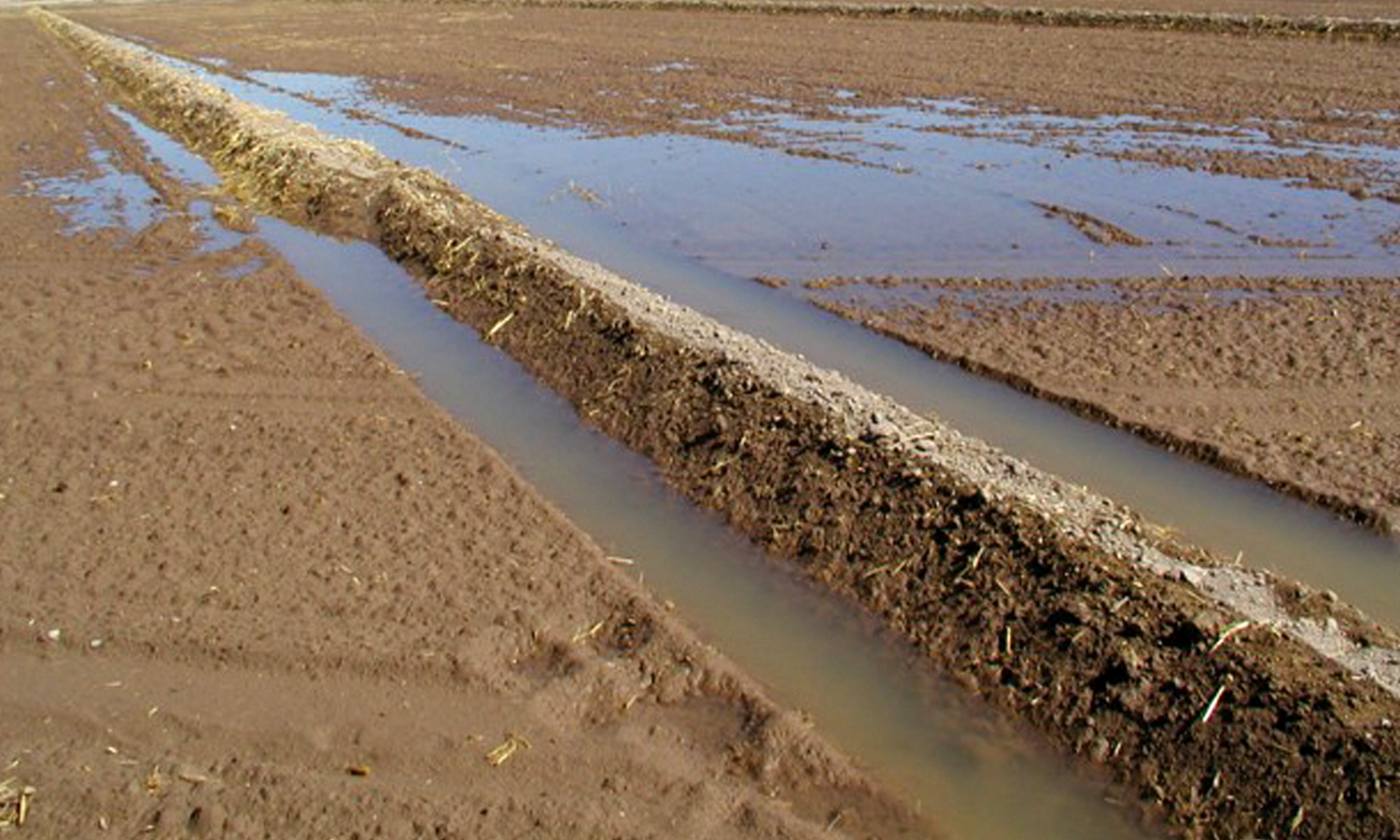
Poor Drainage
THE KEY TO SUCCESSFUL ROI IS HEALTHY, BALANCED SOIL.
Three Soil Health Properties

BIOLOGICAL
Living Organisms In The Soil
- Serves as a food source for microbes
- Converts and releases nutrients
- Builds organic matter and humus
- Better seed germination
- Early root development
- Healthier soils
GEOLOGICAL
Soil Structure (Sand, Silt, Clay)
- Mineralizes soil particles
- Increases water holding capacity
- Reduces compaction
- Easier tillage performance
- Reduces soil loss
- Stronger plants
- Improves soil porosity
CHEMICAL
Interaction Of Soil Nutrients & Micronutrients
- Mineralizes soil particles
- Increases water holding capacity
- Reduces compaction
- Easier tillage performance
- Reduces soil loss
- Stronger plants
- Improves soil porosity
What Are Humic Substances?
Humic substances are the major organic components of soil (humus), peat, and coal.
Humics on the market today are mined, dried, crushed (or liquefied), and remain in their natural state. Humic substances are formed by the microbial degradation and decomposition of organic (plant) matter. Humic substances are extracted from humified materials such as brown coal (Lignite, Leonardite) or peat. The starting material is crushed, converted to granules, liquefied, and/or pelletized. In this state, the humic substances remain an inactive and insoluble humic product.
1. Decomposed matter (with time, pressure, & heat) forms brown coal
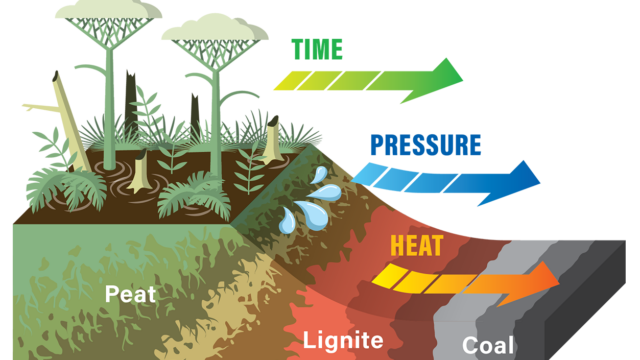
3. It is then dried, crushed, & screened to form granules

2. Brown coal (Lignite, Leonardite) is mined from the ground
Humics on the market today are mined, dried, crushed (or liquefied), and remain in their natural state.
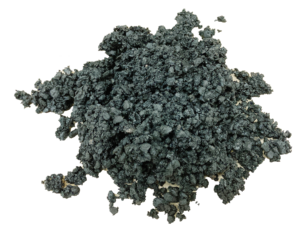
Composition of Mined Brown Coal (Lignite, Leonardite)
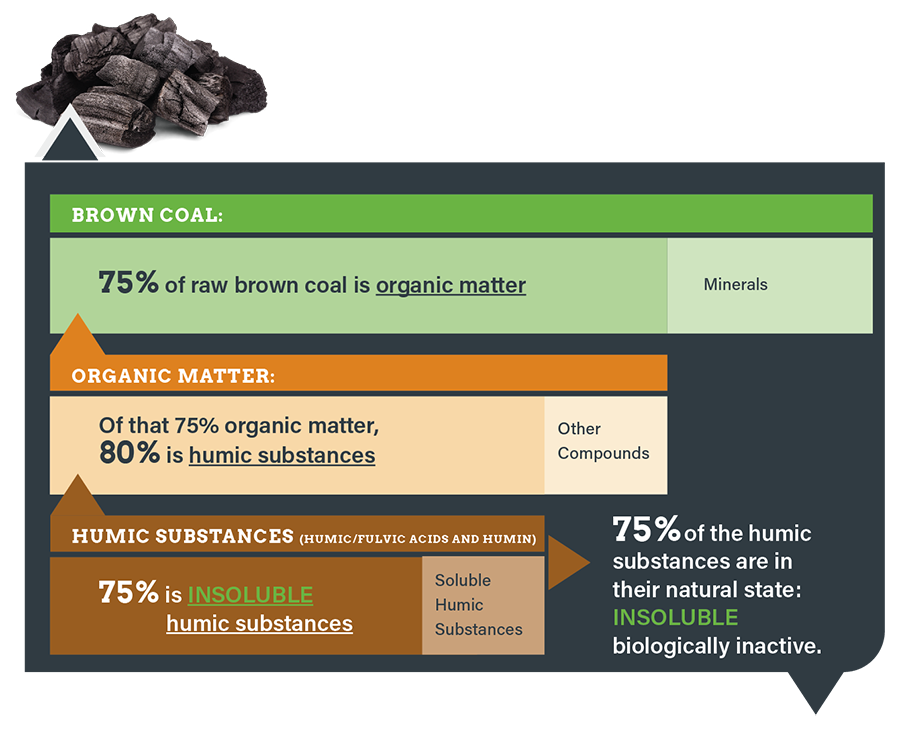
What does INSOLUBLE mean?
Humic products remaining in their natural state are insoluble, meaning they do not dissolve in acids, water, or soil solutions, thereby having little impact on the health of the soil.
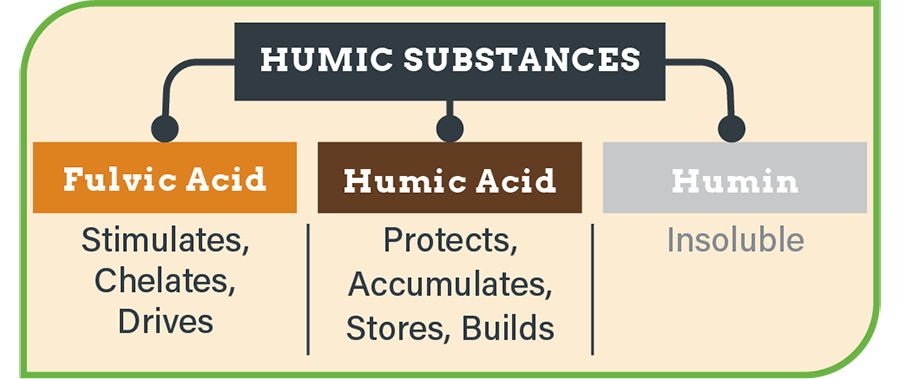
This is where many competitors stop!
Many competitive products are insoluble, inactive, and bio-inhibiting substances.
When applied to the field, they have little to no impact on the soil and its biology.
How Are Monty's Humics & Fulvics Different?
Activated is the key! Monty’s proprietary humic technology makes our product the most active and soluble available in the marketplace, and is formulated to the ideal humic to fulvic ratio to maximize yields and success.
What Differentiates Monty’s Humic Substances from the Competition?
Monty’s activated, proprietary humic and fulvic products are derived from ancient humified material (ex. lignite), not processed plant materials or manufacturing by-products. Competitors using these materials have products which are less pure and less bioactive – resulting in significantly less impact on your crops. Always look to see what the humics and fulvics are derived from. Some competitors may claim higher percentages. But, if they have not started with humified materials, they are not true humic products. Whatever percentage they claim does not reflect the actual humic and fulvic content. Some manufacturers use different methods for determining humic or fulvic content. Monty’s uses the HPTA method (ISO 19822), the most accurate and most widely accepted method in use today. When comparing products, be sure to compare products using the same method of analysis. A higher percentage does not always mean better!
Competition’s Process
Some competitors process their material with an incorrect combination of chemicals, temperature, and/or other processes. These processes can cause their humics to be bio-inhibitive and significantly less beneficial to the plant and soil.
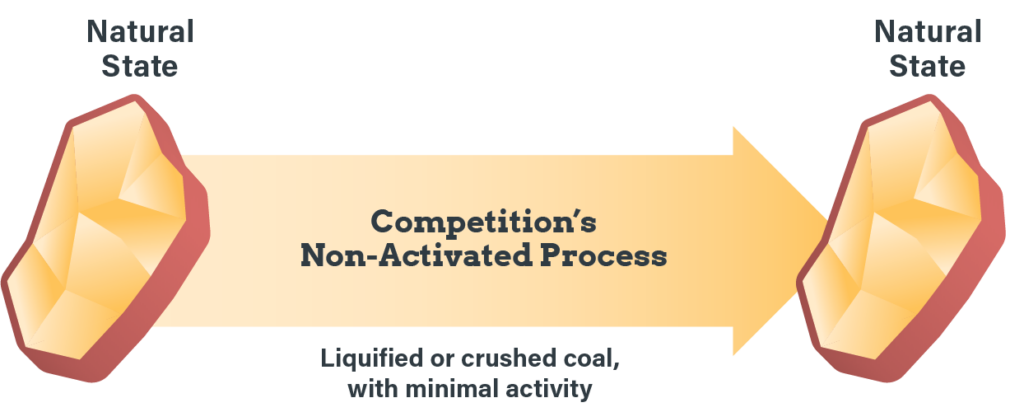
Monty’s Engineered Process
Monty’s takes the process even further with our proprietary humic technology. The unique, engineered process converts the inactive humic molecule to an open, activated soluble state.
This proprietary, patented process optimizes pH, temperature, pressure, time, solids, and agitation, creating a chemical reaction, converting humic substances to their active state. This results in a more soluble and biologically active humic product... maximizing efficiency and ultimately maximizing yields.

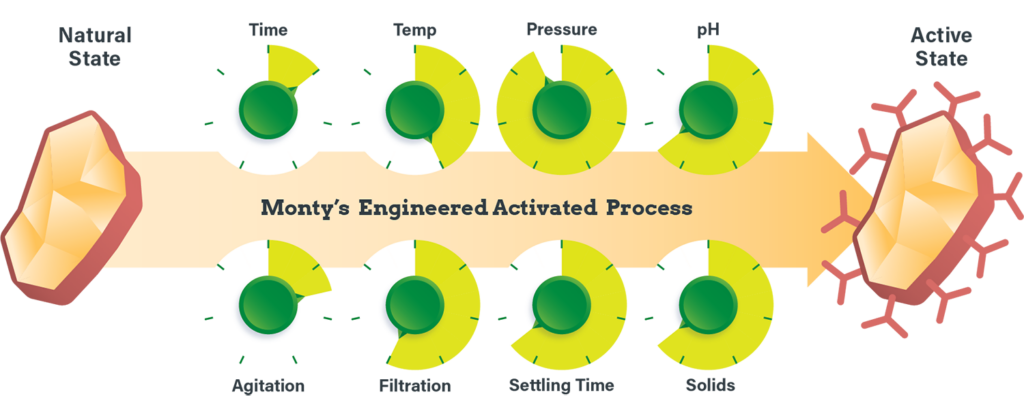
Monty’s Humic Substances Perform
Better Than The Rest!
Competition’s Humic Molecule:
- Insoluble
- Inactive
- Less effective
- Prone to clog
- Bio-inhibitive
Compare Monty’s to the Rest!
This competition’s insoluble humics do not dissolve, and has little to no impact on the soil. Monty’s activated humics go to work in the soil immediately!
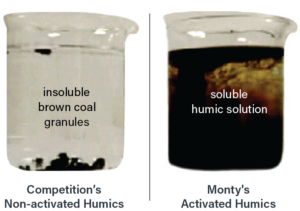
HOW DO MONTY’S HUMICS AND FULVICS IMPACT THE SOIL AND PLANT?
Our engineered humics allow for the selection of the optimum molecule size and humic to fulvic ratio for increased solubility and maximum performance.
Monty’s engineered humics have the optimum concentration for peak biological, chemical, and geological activity. This results in lower dosing rates, higher efficiency, and a wide variety of benefits to the soil and plant.
PHYSICALLY
- Decreases soil compaction
- Increases water holding capacity
- Increases aeration of soils
CHEMICALLY
- Improves Cation Exchange Capacity (CEC)
- Buffers soil pH
- Makes nutrients available to the plant
BIOLOGICALLY
- Acts as catalyst in numerous biological processes
- Stimulates plant growth
- Stimulate root growth for increased nutrient uptake
- Increases soil microbial communities
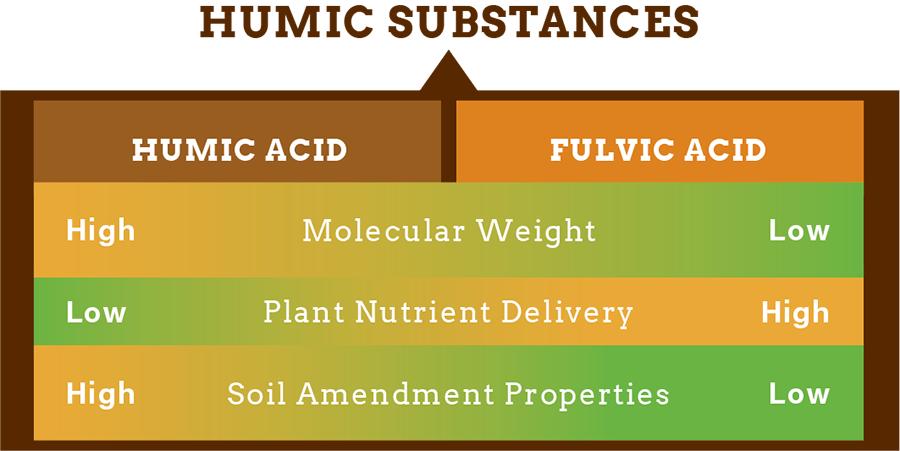
Monty’s humics are unique in that we engineer each product with a specific humic acid to fulvic acid ratio dependent on desired functions. Fulvic acids have a lower molecular weight to help drive nutrients into the plant cells. Humic molecules have a higher molecular weight aiding soil microbe stimulation, increasing CEC, and chelating nutrients.
MONTY’S HUMICS AND FULVICS IMPACT ON THE SOIL AND PLANT
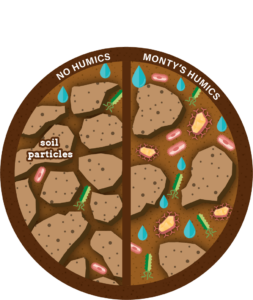
Decreases soil compaction and increases water holding capacity: Humics create space between soil particles allowing for increased water penetration and holding, aerate and increase oxygen content, and create a reservoir for nutrients. These benefits increase soil microbe populations and create an overall healthy soil structure.
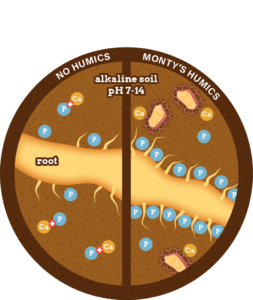
Increases nutrient availability to the plant and buffers pH in alkaline soil: In alkaline soils, calcium is bound with phosphate. Humics form complexes where phosphates are released into the soil along with other nutrients, making them readily available for root uptake. This process neutralizes soil pH.
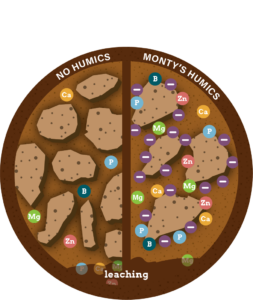
Improves Cation Exchange Capacity (CEC): Humics create clay particle complexes which are negatively charged. These complexes bind positively charged (cations) nutrients including Ca, Mg, K, Zn, Cu, Mn, Fe, and B. These nutrients are then released into the soil and delivered to the plant, preventing nutrient leaching.
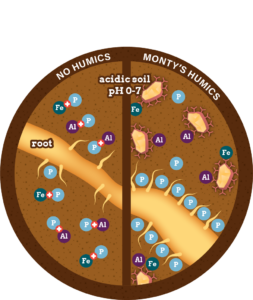
Increases nutrient availability to the plant and buffers pH in acidic soil: Under acidic conditions, humics bind heavy metals making them immobile, promoting the formation of the clay-humic complexes that aid in neutralizing acidic soil.
Monty's: Your Trusted Humic Substances Leader
Monty’s humics and fulvics can improve your soil and maximize your yields year after year. Once applied to the soil, our activated humics technology provides a catalyst that makes everything you apply work better.
✓ PURITY
Highly soluble and clean = No clogging of sprayers, nozzles, or hoses.
✓ ACTIVITY
High efficacy, efficiency, and results = Lower dosing rates and higher yields.
✓ CONCENTRATION
Peak biological, chemical, and geological activity = humic molecules actively preform their function quickly and effectively for maximum performance.
✓ COMPATIBILITY
Tank mixable = Flexibility in mixing with nutrients, fungicides, herbicides, and pesticides.

BALANCED SOIL:
- Active biological life
- Reduced erosion
- Good tilth, loose soil
- Many earthworms
- Increased water intake & retention
- Reduced compaction
- Larger root systems
- Fewer pests & diseases
- Rapid organic matter conversion
- Reduced salt in the soil
- Fewer chemical inputs
- Fewer weeds
WHAT SOLUTIONS DOES MONTY’S OFFER ALL SEASON?
Successful farming requires year-round focus. Monty’s harnesses the power of activated humics and fulvics to develop innovative solutions that target the specific needs of your soil and plants at each stage of the growing season.
Monty’s engineered humics have the optimum concentration for peak biological, chemical, and geological activity. This results in lower dosing rates, higher efficiency, and a wide variety of benefits to the soil and plant.
